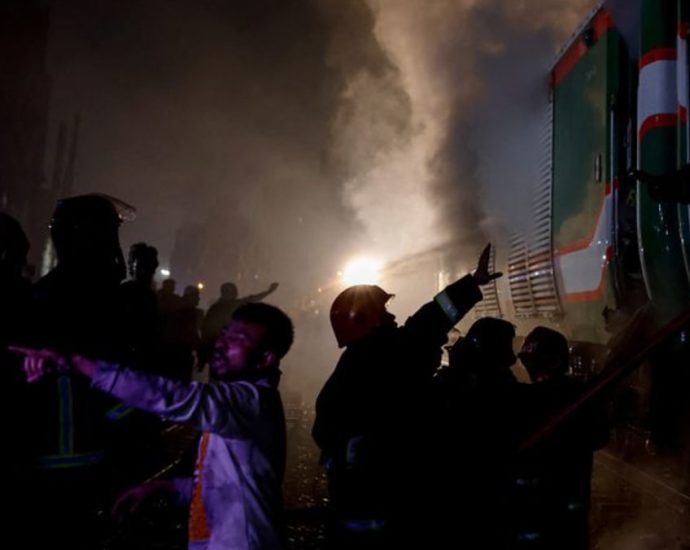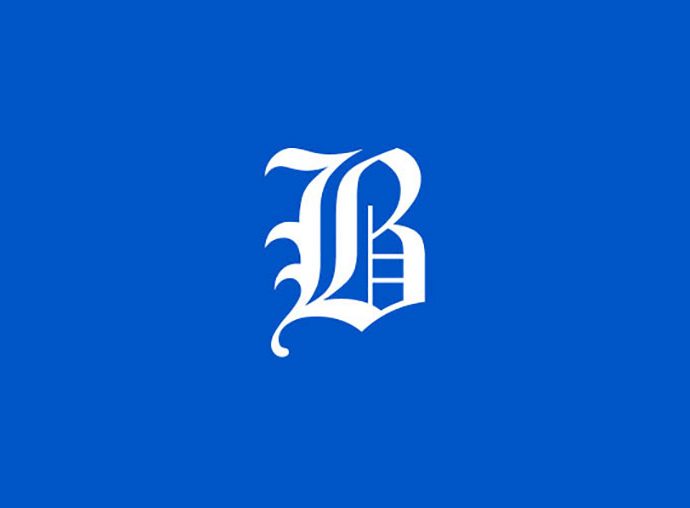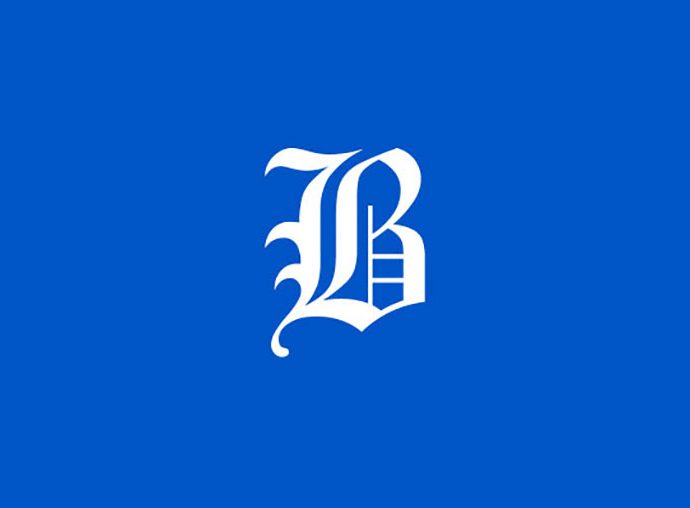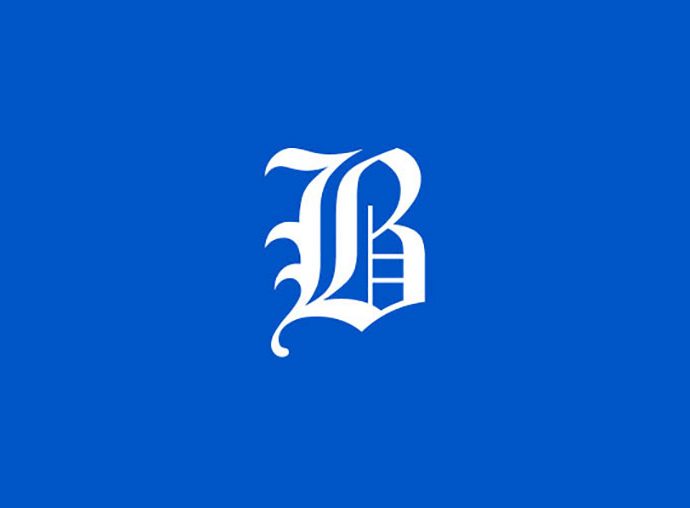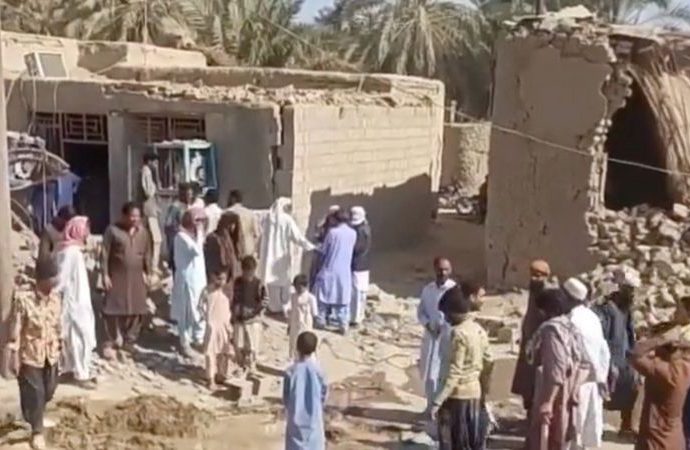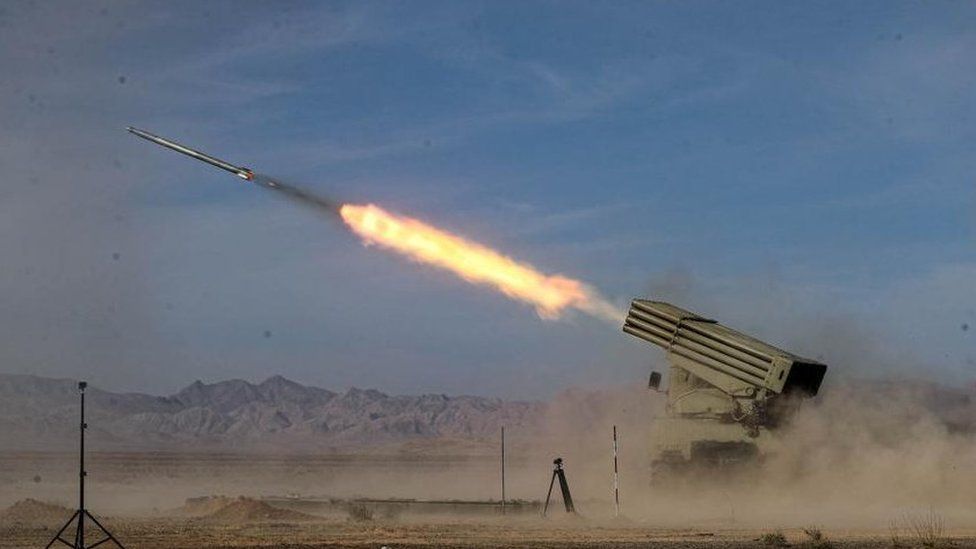Commentary: For some vulnerable individuals, itâs as if the pandemic never ended

Of the 226 COVID-19 deaths between January and October 2023, 210 were aged 60 years and older. The virus remains a serious threat with major health risks for older adults and those with chronic conditions, such as cardiovascular disease, high blood pressure, cancer and diabetes.
Research has shown that they are more likely to get very sick from COVID-19 and be hospitalised. The risk of death increases as the number and severity of underlying conditions increase.
The spikes in hospitalisations and deaths aren’t as scary as they were in 2020 and 2021. The younger healthy among us may have fully moved on from the pandemic, masks and safe distancing rules discarded, revenge travel in full swing.
COVID-19 couldn’t be more distant from the minds of many. Yet, it remains a significant healthcare challenge for the vulnerable populations.
SOME GROUPS REMAIN APPREHENSIVE ABOUT COVID-19
Some remain apprehensive about COVID-19. They may be immunocompromised and are unable to be vaccinated or have a reduced immune response to vaccines.
The constant fear of contracting COVID-19 in some has kept them homebound and reduced their outside world contact to only the occasional phone call. These fears have a significant impact on the mental health of individuals, from anxiety to depression, helplessness to frustration, and their overall well-being has been severely affected.
We should take their concerns seriously.
In addition to safety, the economic costs of neglecting these groups may be severe. According to a report by pharmaceutical company MSD, the cost burden of COVID-19 in the Asia-Pacific remains high and is unevenly distributed across population segments and industries.
Vulnerable populations such as those over 60 or 65 years (depending on the market) and younger adults with one or more comorbidities are likely to be disproportionately impacted by COVID-19, bearing about 40 per cent to 50 per cent of total economic costs.
In Singapore, the analysis predicted that COVID-19 infections in the older population account for about S$565 million annually, or 16 per cent of all direct and indirect costs combined.
Commentary: As South Asia prepares to head to the polls, brace for a possibly violent election year

PAKISTAN
In Pakistan, elections are scheduled for Feb 8 but risk being postponed amid political uncertainties and the military’s meddling in the elections.
Pakistan’s former prime minister Imran Khan, who is currently in jail on various charges after being ousted from power in April 2022, has said the upcoming election could be a “farce”. Khan, widely seen as the country’s most popular leader, has accused the military of fixing the election by barring him from contesting.
Although Pakistan elects its civilian governments, the military has always wielded power and influence over the election process and elected governments. The army and Khan were on cordial terms before the 2018 general elections that brought him to power but the relationship soon soured.
After Khan’s ouster following his fallout with the military, Pakistan became embroiled in political uncertainty and chaos made even worse by a crippling economic crisis.
The tide has changed in 2024 and according to observers, the military is determined to prevent Khan and his party, the Pakistan Tehreek-e-Insaf (PTI), from forming the government. The exclusion of Khan from the election could increase the sympathy of those who consider him unfairly treated and worsen the popular discontent against the country’s powerful military.
More worryingly, Pakistan’s severe political problems in 2024 come amid militant attacks on the Pakistani military and police, having risen considerably in the previous year. The Islamabad-based Centre for Research and Security Studies (CRSS) reported that 2023 was the “deadliest year” or the country’s “police and military forces in a decade”, with more than 500 security personnel killed.
Tehreek-e-Taliban Pakistan (TTP), also known as the Pakistani Taliban, is the biggest culprit, responsible for several high-casualty attacks. TPP is a close ally of, but is separate from, the Afghan Taliban, which returned to power in Afghanistan in August 2021.
Pakistan officials have blamed the Afghan Taliban government for not doing enough to stop the TTP’s cross-border attacks. Still, the attacks are set to continue and possibly accelerate as TTP and other militant groups try to take advantage of Pakistan’s chaotic election.
Srettha told to combat haze
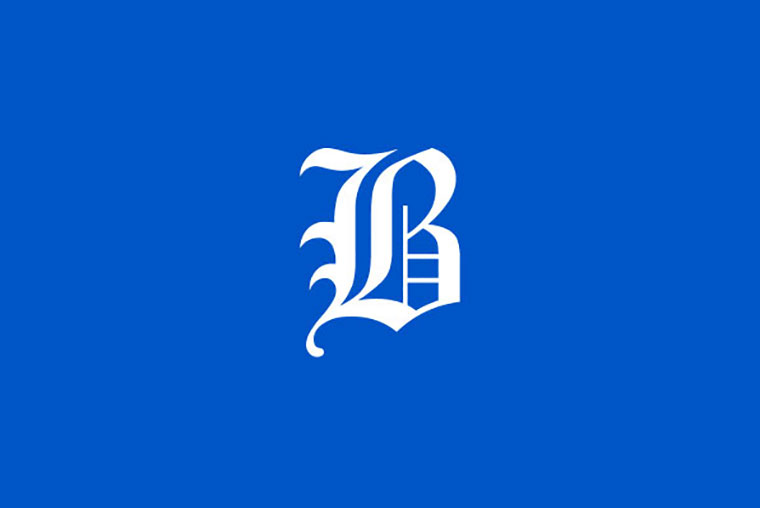
Court orders measures to tackle PM2.5 in North
PUBLISHED : 20 Jan 2024 at 04:00
The Administrative Court in Chiang Mai has instructed Prime Minister Srettha Thavisin and the National Environmental Board (NEB) to put in place measures to combat ultra-fine dust pollution and especially safeguard the health of people in the northern region.
The court’s order is in response to a lawsuit last April by civil society groups in the North who accused the prime minister and the NEB of falling short in their efforts to mitigate the persistent haze problem.
In the lawsuit, the groups demanded the prime minister exercise his authority under Section 9 of the Enhancement and Conservation of National Environmental Quality Act, which grants him the power to instruct agencies to take adequate steps to address an environmental hazard.
They also demanded the NEB implement the national plan to mitigate the ultra-fine dust pollution declared by the government in 2019. The groups blamed the prime minister’s delay in taking action and the NEB’s neglect for the continued levels of PM2.5.
In its ruling, the court found the prime minister and the NEB were lacking in their efforts to address the haze problem. But because this has eased in the northern region since May, the court was unable to order the defendants to carry out the specific actions demanded by the civil society groups.
The North continues to grapple with high levels of PM2.5 from December to April each year, and the problem is only expected to worsen.
The court said the PM and NEB must have an action plan ready within 90 days.
As of 7am yesterday, 45 provinces were experiencing unsafe pollution levels, with PM2.5 levels exceeding the safe threshold of 37.5 µg/m³, according to the Geo-Informatics and Space Technology Development Agency (Gistda).
Twenty-two provinces, including Bangkok, had seriously harmful, red-coded pollution levels, while the others had unsafe, orange-coded levels of ultra-fine dust.
Democrat Party deputy leader Suchatvee Suwansawat yesterday called on the Bangkok Metropolitan Administration (BMA) to issue timely alerts whenever the haze worsens.
“The BMA should first and foremost alert parents. Small children should stay at home. LED boards across the capital should display a warning for people to wear face masks,” he wrote.
He also urged the BMA to enforce related laws and ensure construction sites comply with measures designed to control dust pollution. He stressed that the haze problem could be resolved if those in power take the issue seriously and tackle its root causes.
The air quality in Bangkok is forecast to improve on Jan 23-23 due to better air circulation. The Pollution Control Department, the Land Transport Department, the Traffic Police Division and the BMA yesterday set up checkpoints in 17 districts to examine black smoke from vehicles as part of attempts to control the sources of PM2.5. About 60% of the haze pollution is believed to be caused by traffic.
PM confirms handout delay pending anti-graft study

PUBLISHED : 20 Jan 2024 at 04:00
The government will move ahead with the 500-billion-baht digital wallet handout scheme, but its launch will be postponed pending a study from the anti-graft agency.
Prime Minister Srettha Thavisin confirmed yesterday the scheme would be pushed back, adding the delays would depend on the findings of the National Anti-Corruption Commission (NACC) study.
Mr Srettha brushed off speculation the scheme could be incorporated into the 2025 budget spending plan, saying the government was not considering this.
“We’re not looking that far ahead at this point,” he said.
The prime minister’s remarks came after Deputy Finance Minister Julapun Amornviwat on Wednesday discussed the possibility of the handout scheme being delayed until June. The digital wallet policy committee had postponed its Jan 16 meeting because it was waiting for the NACC study.
Mr Srettha said he understood that the NACC and relevant agencies have concerns over the scheme but expressed confidence that the government could address any reservations.
“I understand their concerns and can explain if they can pinpoint where such concerns lie,” he said.
In response to the Move Forward Party (MFP) MP Sirikanya Tansakul’s remark that the scheme could be scrapped after attracting the NACC’s attention, the PM said: “That’s out of the question. At this point, we’re moving ahead.”
The government has data to prove the handout is worth carrying out, he said, adding there would be no corruption involved.
Thanawat Phonwichai, president of the University of the Thai Chamber of Commerce, said the Thai economy is projected to grow by over 3.2% this year without the digital wallet scheme, but growth could hit 4-4.5% this year and next if the scheme is implemented.
The economy is forecast to grow by 4.2% if spending on the scheme is 400 billion baht and by 3.5% if the spending is cut to 160 billion baht, Mr Thanawat noted.
He pointed out that the country’s stagnant growth is due to external factors, so the government has to consider the scheme’s benefits when determining the appropriate spending level.
The government needs to come up with fresh stimulus measures and investment schemes to achieve a growth rate of above 4% next year because the Land Bridge megaproject, soft power development and the Eastern Economic Corridor policy are long-term projects that have yet to contribute to growth in the short term, he said.
The digital wallet is the government’s flagship policy for economic stimulation, with 10,000 baht each to be handed out to 50 million people aged 16 and over via an app.
Record lithium site in Phangnga ‘unconfirmed’

PUBLISHED : 20 Jan 2024 at 04:00
The Ministry of Natural Resources and Environment said it has not confirmed a claim that Thailand is home to the world’s third-largest site of lithium. However, the ministry’s top authority confirmed that the deposits in the country’s southern province of Phangnga have a higher content of lithium than many other key deposits around the world.
The statement followed an earlier citing by deputy government spokeswoman Rudklao Suwankiri that the county had found more than 14.8 million tonnes of lithium. According to her post on the government website on Thursday, the discovery “has the country the third-largest reserves of the mineral in the world after Bolivia and Argentina”.
Lithium is regarded as a significant raw material for EV car batteries. The finding thus backs a statement previously made by the Ministry of Industry that Thailand’s lithium deposits have good potential to serve the government’s plan of making the country a hub for making electric vehicles and parts.
The discovery of the mineral is hoped to promote and lure more foreign investment to the electric vehicle industry. Forecasts also suggest that demand for lithium will double by 2025 and reach over two million tonnes by 2030.
According to the ministry’s permanent secretary, Jatuporn Buruspat, the Department of Mineral Resources and the Department of Primary Industries and Mines have been working together to set up the country’s mining zone.
Regarding the record lithium claim, he said: “We have the potential, but we can’t confirm the amount or whether it will be the world’s third-largest site.”
Meanwhile, Maitree Chongkraijak, chairman of the Happiness Civil Society in Phangngga Association, said he did not believe the southern province would have such a huge deposit.
He added that the province in the past was known for its tin mines. But it is sufficiently rich in culture, history and tourism so that it could create a well-economic-based community.
“We should make the right decision on whether we will promote the mining industry, which is rather against the province’s plan to become a hub for ecological tourism and wellness. It needs to be discussed based on accurate information. The issue has become a hot topic in the province as they would like to know whether (the claim about the lithium site) is true or not,” he said.
Jessada Denduangboripant, a lecturer at Chulalongkorn University, said he doubted the claim that 14.8 million tonnes had been found in the two sites of Ruangkiat and Bang Etu in Phangnga.
He said the amount may refer to the discovery of pegmatite, which contains around 0.45% lithium. This would mean much less could be extracted. “Based on a rough calculation, it would only be 60,000-70,000 tonnes!” he posted on Facebook.
5 arrested for child pornography, abuse

PUBLISHED : 20 Jan 2024 at 04:00
Four suspects have been arrested for creating and selling video clips of a sexual nature with minors, while another suspect has been nabbed for allegedly sexually abusing his 7-year-old daughter.
A special team of police and Cyber Crime Investigation Bureau officers detained four online content creators based in Bangkok and Pathum Thani yesterday.
The suspects were charged with producing and selling pornographic content featuring a 16-year-old girl without blurring or covering her face. The content was posted on the social media platform X and the subscription-based OnlyFans.
The four offenders are facing five charges — possession and exploitation of child pornography; sharing of child pornography; production, possession, import, export or distribution of child pornography; importing and publishing pornography to a computer system, allowing the general public to access it, and human trafficking involving exploitation of a child to produce pornography.
The penalties range between three to 15 years in prison and 60,000 to 1.5 million baht in fines.
The 16-year-old victim, hired by the suspects to perform in the sexual clip, was later rescued and sent into the care of health professionals.
Meanwhile, on Wednesday, the Department of Special Investigation’s (DSI) Bureau of Technology and Cyber Crime announced the arrest of a Thai-German man who had been sexually abusing his 7-year-old daughter and posted footage of the abuse online.
The arrest, which took place on Jan 14 in a northeastern province, was the result of continuous cooperation between the Thai authorities, Germany’s Bundeskriminalamt police (BKA) and the anti-sex trafficking organisation Operation Underground Railroad (OUR).
On July 20 last year, the BKA sent evidence to the DSI, which indicated that the suspect had been repeatedly abusing a child in Thailand and uploading illicit pictures and videos of the abuse on a dark website accessible in Germany.
Further investigations revealed that the perpetrator was a Thai-German citizen residing in a northeastern province. The child victim was supposedly his 7-year-old daughter, born to a Thai mother. Evidence found in his home included several electronic devices containing files of child pornography, which matched the evidence from the BKA.
The man was arrested and transferred to the Bureau of Technology and Cyber Crime for investigation before being sent to the Criminal Court for imprisonment. His request on Jan 16 for bail was rejected.
Japan lands on Moon but glitch threatens mission
 Jaxa
JaxaA Japanese robot has successfully touched down on the Moon but problems with its solar power system mean the mission may live for just a few hours.
The Smart Lander for Investigating Moon (Slim) put itself gently on the lunar surface near an equatorial crater.
The feat made the Asian nation only the fifth country to soft-land on Earth’s natural satellite, after the US, the Soviet Union, China and India.
Engineers are now battling to save the mission, however.
For reasons not yet fully understood, the craft’s solar cells will not generate electricity.
This leaves Slim totally reliant on its batteries and these will eventually discharge. When they do, the craft will go silent. It won’t receive commands and it won’t be able to talk to Earth.
Engineers are currently prioritising activities.
They’ve turned off heaters and are pulling down pictures from the craft. They’re also retrieving data that will tell them how well the landing software worked.
Japanese space agency (Jaxa) officials will not immediately give up on Slim if it does fall silent. It’s always possible the solar cells have somehow become oriented in a way that prevents them from seeing the Sun.
As light angles change on the Moon, it was possible Slim could come back to life, the officials said.
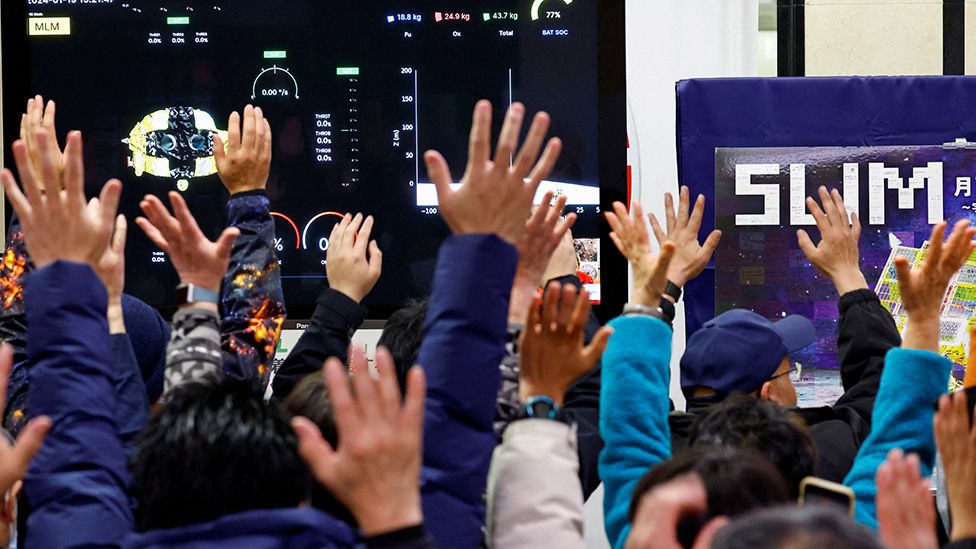
Asked at a news conference whether Japan could justifiably claim a soft landing, Jaxa vice president, Hitoshi Kuninaka, said it could.
“If powered descent wasn’t successful, then there would have been a collision with the surface at a very high speed and spacecraft function would have been completely lost,” he told reporters.
“But it is still sending data properly to us, which means our original objective of a soft landing was successful.”
Slim was carrying two small rovers and telemetry indicates it managed to eject these as planned just before touchdown.
The craft, which carries an infrared camera, was to spend the next fortnight studying the local geology. How much of this investigation can be achieved in the time available is uncertain.
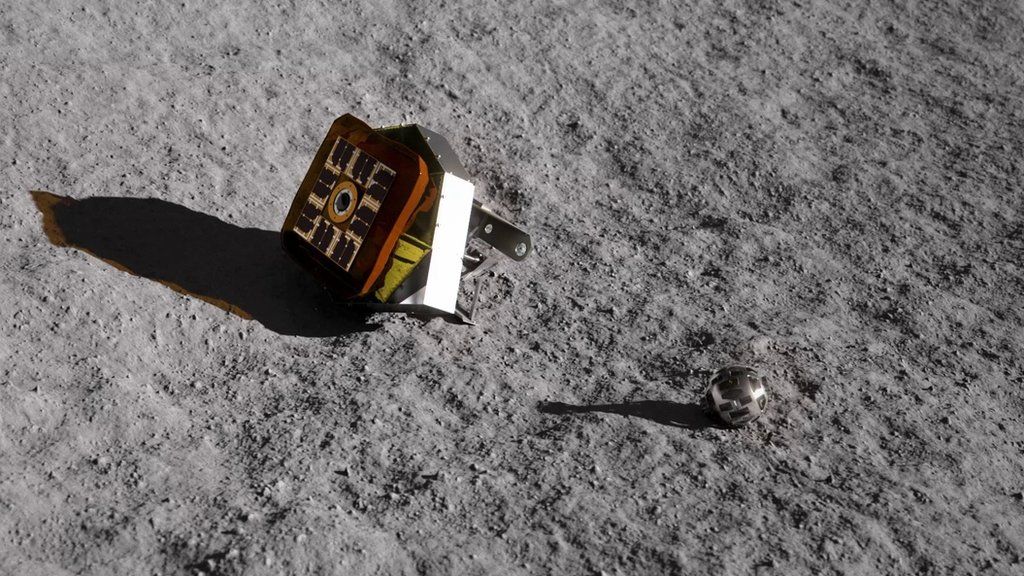
Statistically, it’s proven very hard to land on the Moon. Only about a half of all attempts have succeeded.
Jaxa put its faith in new precision-navigation technologies.
The lander’s onboard computer used rapid image processing and crater mapping to avoid hazards to reach its touchdown point.
Engineers had wanted to get within 100m (330ft) of their targeted location and will now be studying data to see how well Slim performed. But the early indications are that the technologies worked as designed.
“Looking at the trace data, I believe that Slim most certainly achieved a pinpoint landing with 100m accuracy. Of course, as we informed you in advance, it would take about a month to analyse the information accurately,” Mr Kuninaka said.
Slim began its descent manoeuvres from an altitude of 15km (9 miles) at midnight into Saturday, Japan Standard Time (15:00 GMT, Friday). Touchdown occurred just after 15:20 GMT.
The landing location, near Shioli Crater, is currently bathed in sunlight but the darkness of lunar night will return there at the end of the month.
When that happens, temperatures will plummet to levels that are very capable of breaking electronic circuit boards.

Jaxa has twice landed robots on asteroids, so this Moon touchdown is another feather in its cap.
It will be playing significant roles in the US space agency’s (Nasa) Artemis programme, which seeks to put humans back on the lunar surface after a gap of more than half a century.
Last year, a private Japanese company, iSpace, had a go at landing. Its Hakuto-R craft crashed when the onboard computer became confused about its altitude above the Moon.
On Thursday, the private American company Astrobotic disposed of its Peregrine landing craft in Earth’s atmosphere. A propulsion fault prevented it from even trying to make a touchdown attempt.
Dr Simeon Barber from the UK’s Open University had instrumentation on Peregrine.
He saluted the Japanese effort.
“For me, this was all about precision landing. That’s a huge Success. I’d be really happy if I was them,” he told BBC News.
“We’re in an era of a lot of lunar missions happening with lots of different players. If we collate all this knowledge, that all these players are gaining through these attempts – whether successful or not – then we learn as a community how to put missions together more successfully in the future.”
Likewise, Dr Emma Gatti, from the digital magazine SpaceWatch Global, said Japan had much to celebrate: “It’s historic for them; it is a matter of prestige. It is important for Japan as a country; it’s important for all the investment they have made – proof that it can be done by a country not as big as China or US.”
South Korea: Police chief charged over Seoul Halloween crush
 Getty Images
Getty ImagesSeoul’s chief of police has been charged with negligence more than a year after a Halloween crush left 159 young people dead in South Korea.
Kim Kwang-ho is the highest-ranking police official to be charged in relation to the tragedy, according to local media reports.
He is accused of failing to ensure there were enough officers in Itaewon, central Seoul, on 29 October 2022.
More than 100,000 people had gathered in the area that night.
Some of the victims’ relatives have welcomed the charge, but said it should have happened earlier.
Mr Kim, head of the Seoul Metropolitan Police Agency, was off duty and at home on 29 October when the tragedy unfolded.
According to authorities, some 137 officers had been deployed on the ground at Itaewon that night.
The officers were vastly outnumbered by the tens of thousands of, mainly young, people who had gathered in the narrow alleyways of the Itaewon entertainment district.
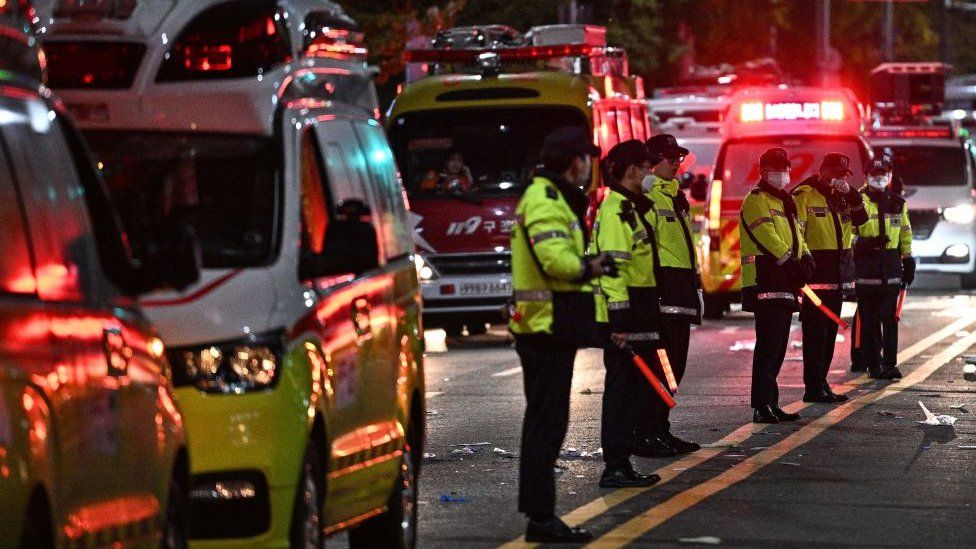
The first indication something was wrong back in 2022 came just after 18:30 local time, several hours before the deadly crush took place in an alley off the main road.
Most of the people who lost their lives that night were in their 20s.
A report released in January 2023 said local municipal and emergency service officials were responsible for weak planning and a poor emergency response.
It found that no preventive measures were taken in advance, and appropriate measures were not taken after emergency calls for help were received.
Investigators also said incorrect assessments of the situation led to a delay in relaying information and lack of cooperation among organisations.

Related Topics
-
-
4 November 2022

-
-
-
25 October 2023
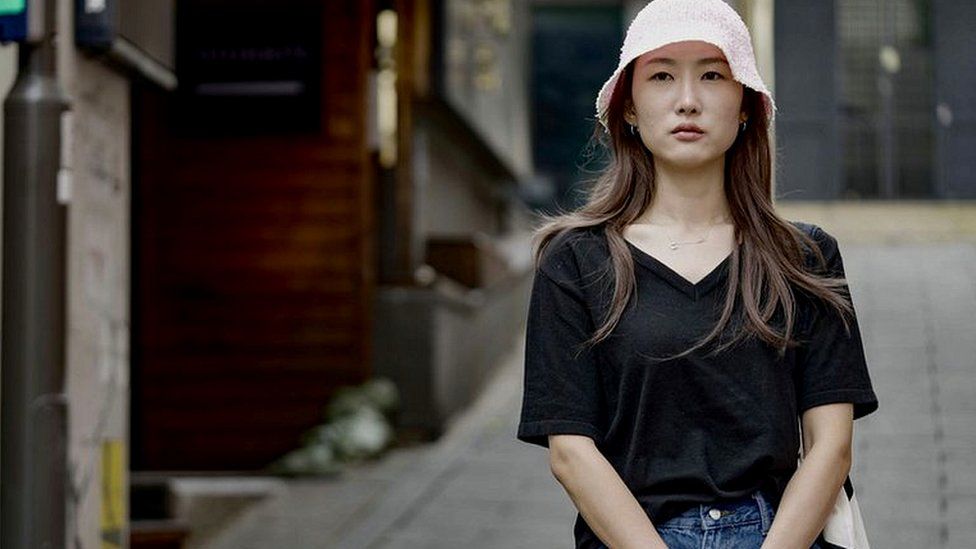
-
-
-
13 January 2023
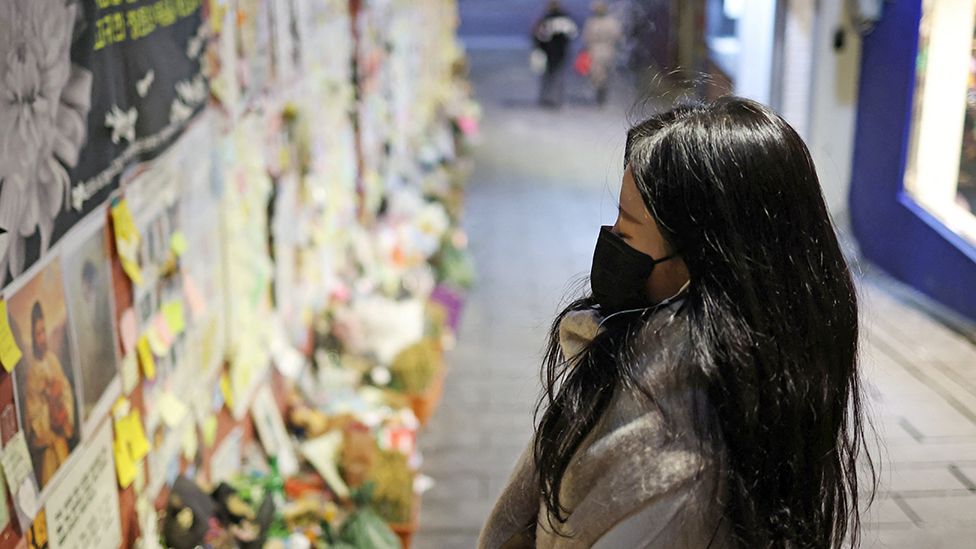
-
-
-
2 November 2022
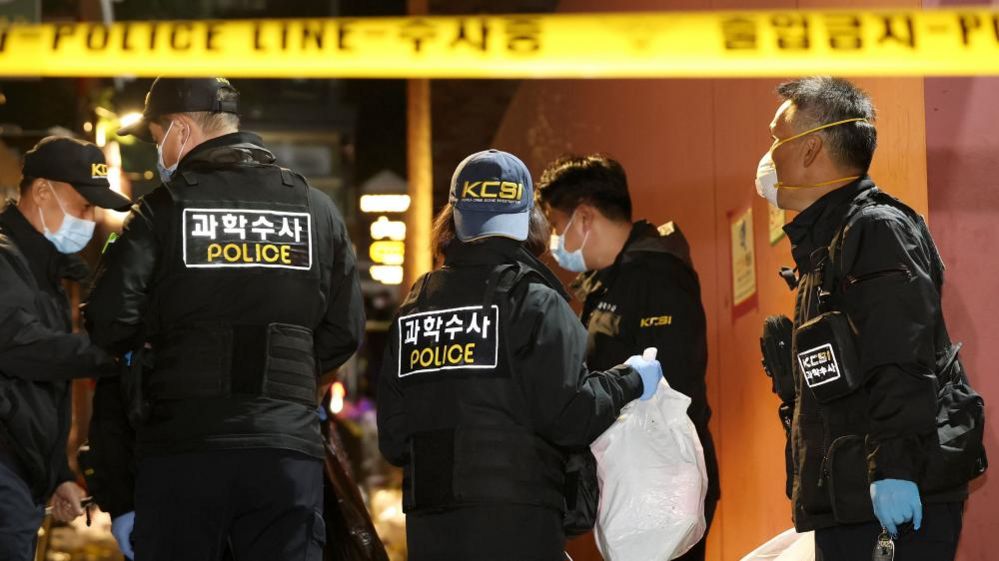
-
Pakistan-Iran strikes: Where is Balochistan and why is it being targeted?
 FAYYAZ AHMED/EPA-EFE/REX/Shutterstock
FAYYAZ AHMED/EPA-EFE/REX/ShutterstockBalochistan is Pakistan’s largest province and although it has more resources than other provinces, it is the least developed.
The name Balochistan can also be used to refer to a wider area that includes land in Iran and Afghanistan. In the past week, both Iran and Pakistan have launched strikes across each other’s borders targeting militants in the region.
To understand the escalation in fighting, here’s a closer look at Balochistan, which has a distinct cultural and historical identity.
Where is Balochistan and why is it important?

The largest part of Balochistan is in south-western Pakistan. The Pakistani province covers nearly 44% of the country’s total land but is home to only 6% of the country’s 241 million people. Its history is marred by insurgency, militancy, and human rights violations.
Sharing a volatile border with Iran and Taliban-controlled Afghanistan, Balochistan also boasts a vast coastline along the Arabian Sea.
The region derives its name from the Baloch tribe, which has resided here for centuries. Balochs remain the largest ethnic group, followed by the Pashtuns. Many Baloch people also live in the neighbouring Iranian province of Sistan-Baluchestan, as well as in Afghanistan.
Balochistan stands out as the richest Pakistani province in terms of natural resources, including gas and minerals and is a crucial part of a multi-billion dollar project funded by China called the China Pakistan Economic Corridor (CPEC).
The project is part of Chinese President Xi Jinping’s Belt and Road Initiative, with the deep-sea port in the city of Gwadar, near the Gulf of Oman, seen as a vital checkpoint.
China is also involved in mining projects here and the construction of an international airport in Gwadar, which insurgent groups in Pakistan fiercely oppose.
A Canadian mining company, Barrick Gold, holds a 50% stake in a Balochistan mine called Reko Diq, which is considered to be one of the world’s largest underdeveloped sites for copper and gold.
What’s behind the unrest?

Local groups in both Pakistan and Iran are part of a decades-long struggle for greater autonomy in Balochistan.
Recent cross-border tensions escalated with Iran’s attack on Pakistan on 16 January, which Pakistan said killed two children. Pakistan retaliated with a missile strike inside Iranian territory, which Iran says killed nine people.
Iran claimed it was targeting Jaish al-Adl, a militant group active against Iran, while Pakistan said it was aiming at the “hideouts” of two militant groups inside Iran, the Balochistan Liberation Army (BLA) and the Balochistan Liberation Front (BLF).
Pakistan’s strikes were the first external land attack on Iran since the 1980s. It comes as tensions in the Middle East are high with the Gaza war intensifying. Iran also attacked targets in Iraq and Syria in the same week it attacked Pakistan.
The Pakistani province of Balochistan has long grappled with extensive exploitation of its resources and this has been a major catalyst for insurgency and unrest. Locals, particularly the Balochs, have blamed governments for exploiting and profiting from Balochistan’s resources while neglecting the development of the region itself.
Resistance against the Pakistani government and the militant insurgency advocating for an independent state for the Baloch people began in 1948, after Pakistan’s independence from the British Indian Empire.
Resistance continued in phases through the 1950s, 1960s, and 1970s. After a relatively quiet period, insurgent activities increased significantly from 2003 during the era of military ruler Gen Pervez Musharraf. He launched several counter-insurgency operations in Balochistan and a famous Baloch leader, Nawab Akbar Khan Bugti, was killed in one of the most controversial ones.
Bloody counter-insurgency operations and a crackdown in the province by Pakistan’s army and intelligence agencies have reportedly seen tens of thousands of people disappear, allegedly picked up, tortured and killed with impunity by Pakistani security forces. Pakistan strongly denies these accusations.
According to the Voice for Baloch Missing Persons (VBMP), there are more than 7,000 people missing from Balochistan. But the Commission of Inquiry on Enforced Disappearances says there are just 454 active cases from Balochistan as of October 2023.
Pakistan’s interim prime minister recently said in an interview with the BBC that the number was “exaggerated”, claiming there are only 50 missing people in Balochistan.
Some of these cases are with the Supreme Court and a large group of women and family members have been protesting in Islamabad, demanding people are returned and an end to kidnappings and killings in the region.
Which militant groups operate in Balochistan?
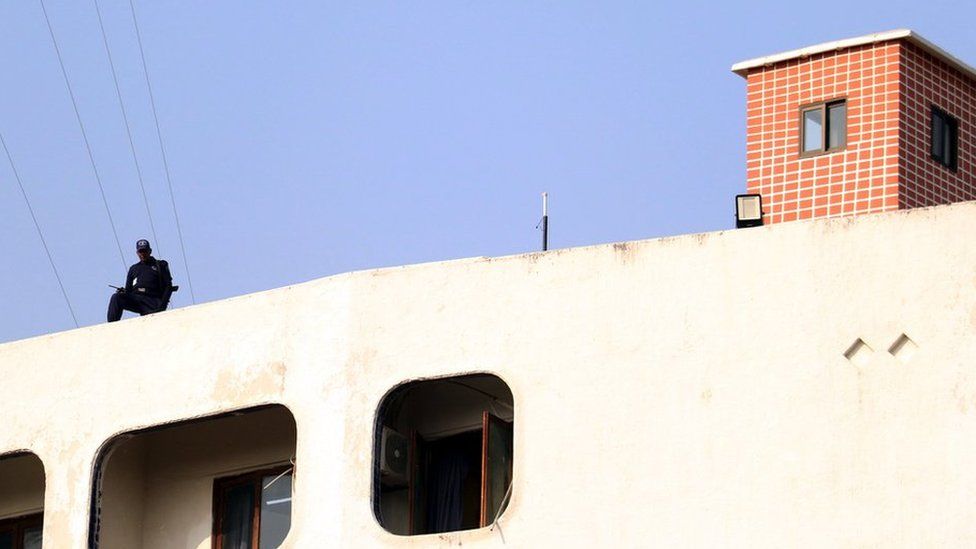
Various militant groups have operated in the province but two remain highly active in the region – the BLF and BLA. These groups operate against Pakistan inside Pakistani territory although Pakistan claims they maintain hideouts primarily in Iran and sometimes in Afghanistan too.
Pakistan accuses the Iranian government of offering safe havens to the leaders and militants of these groups, which Iran denies. Pakistan also claims that India financially supports some factions in Balochistan – allegations India denies.
In the past two years, the Pakistani government has expressed heightened concern over reports of joint attacks by the BLA and the Pakistani Taliban (TTP), an umbrella organisation of various Islamist armed militant groups operating along the Afghan-Pakistani border.
The BLA stands out as the militant group challenging the authority of Pakistan the most. Several Western countries, including the UK and US, have designated this group as a global terrorist organisation.
In recent years, the BLA has intensified its attacks, shifting from primarily targeting Pakistan’s security forces in Balochistan to focusing on Chinese nationals involved in projects in the region.
Similar to other insurgent groups, the BLF frequently targets gas projects, infrastructure, and security posts in Balochistan. Since 2011, the group has actively carried out attacks against Pakistani security forces, foreign workers, government affiliates, and journalists.
Established in Syria in 1964, the BLF initially joined the Iranian Baloch Revolt, an insurgency of Baloch groups against the Iranian government. After five years of conflict, the group negotiated an end to the fight with the Shah of Iran. Subsequently, the BLF, along with other Baloch groups, turned against the Pakistani state, taking refuge in Afghanistan in the 1970s.
-
-
23 hours ago
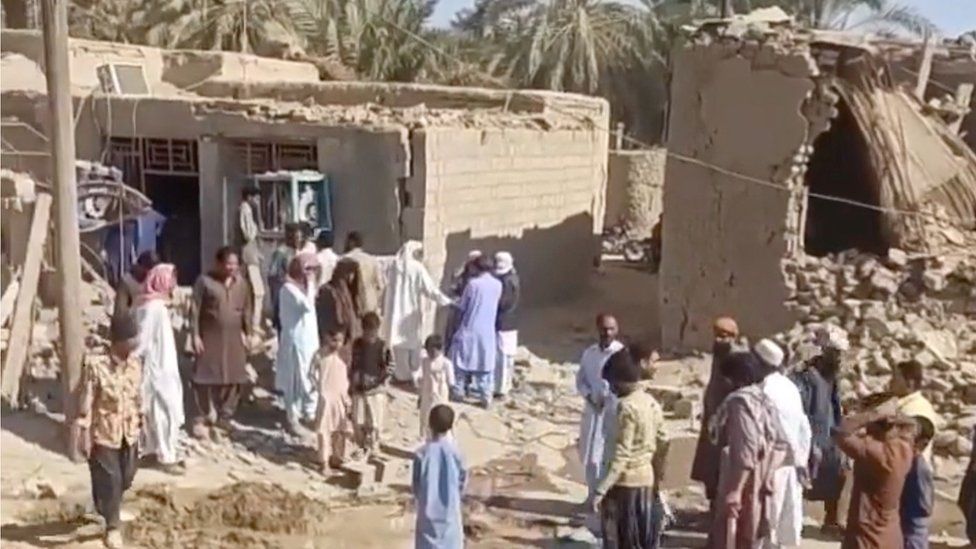
-
Pakistan keen to work on ‘all issues’ with Iran
 EPA
EPAPakistan has expressed its willingness to work with Iran on “all issues” in a call between their foreign ministers.
It comes after both countries exchanged drone and missile strikes on militant bases on each other’s territory.
Iran said Thursday’s strikes killed nine people in a border village on its territory, including four children. Pakistan said an Iranian attack on Tuesday killed two children.
There has been no immediate comment from Iran on the talks.
On Friday, Pakistan said a telephone conversation was held between Foreign Minister Jalil Abbas Jilani and his Iranian counterpart Hossein Amir-Abdollahian.
“Foreign Minister Jilani expressed Pakistan’s readiness to work with Iran on all issues based on spirit of mutual trust and cooperation,” the statement said.
“They also agreed to de-escalate the situation. The return of ambassadors of the two countries to their respective capitals was also discussed.”
The reciprocal attacks came as tensions in the Middle East are high with several overlapping crises.
Israel is fighting the Palestinian group Hamas in Gaza and exchanging fire with Iran-backed Hezbollah in Lebanon.
Meanwhile, Iran-backed groups in Iraq and Syria are targeting US forces, and the US and UK have struck the Iran-backed Houthis in Yemen, who have been attacking shipping.
On Thursday, Pakistan’s foreign ministry said its strikes around the Iranian city of Saravan had come in light of “credible intelligence of impending large-scale terrorist activities”.
The ministry added it “fully respects” Iran’s “sovereignty and territorial integrity”.
Pakistan’s army said the “precision strikes” were conducted with drones, rockets and long-range missiles and targeted the Balochistan Liberation Army and the Balochistan Liberation Front.
Both groups are part of a decades-long struggle for greater autonomy in Balochistan, a remote region in south-western Pakistan.
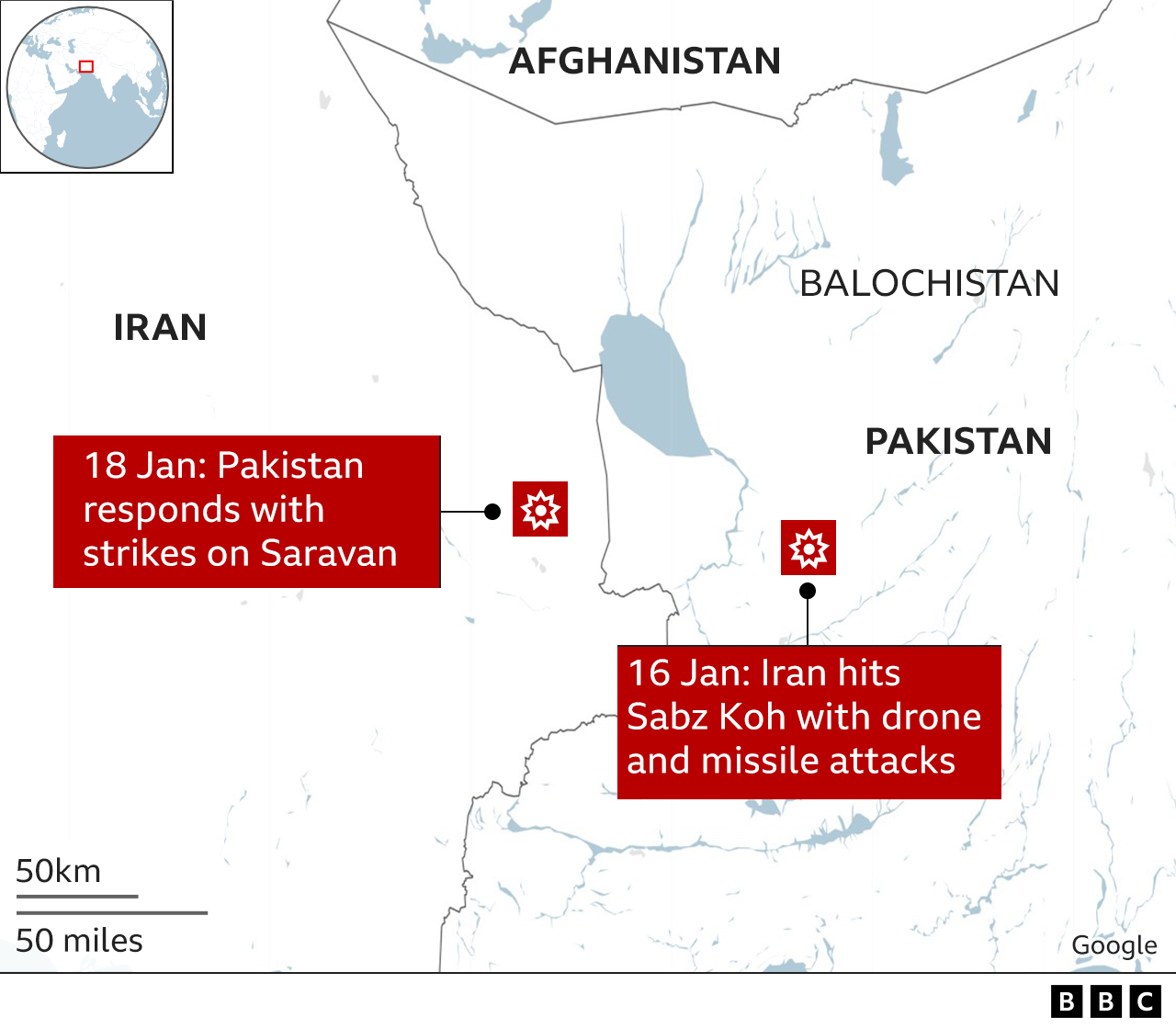
-
-
23 hours ago

-


